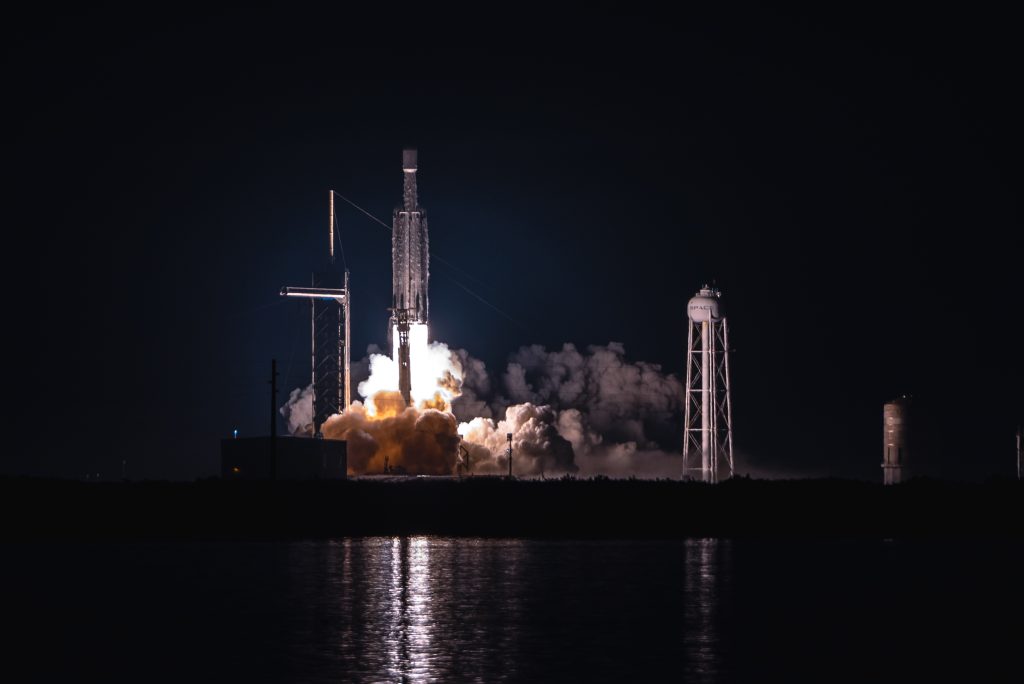The Space Force is moving to up competition for its most important launches, selecting Blue Origin, SpaceX, and United Launch Alliance (ULA) to take part in the next phase of its National Security Space Launch (NSSL) program.
Under a contract award made June 13, the three companies will compete from 2025-2029 for up to $5.6 billion in task orders from NSSL, which handles the U.S. government’s top national security launches and has already conducted 70 launches covering various missions such as GPS, surveillance, and classified missions for the Air Force, Navy and National Reconnaissance Office.
For this latest stage of NSSL, Phase 3, covering 2025 to 2034, the Space Force decided to take a “dual-lane” approach—Lane 1 will prioritize commercial-like missions, allowing for a higher tolerance for risk. Lane 2 will ensure traditional, full mission assurance for the “most stressing heavy-lift launches,” suited for risk-averse missions.
The June 13 contract award is for Lane 1, which will include at least 30 missions for these three companies by June 2029.
ULA and SpaceX were already part of NSSL in Phase 2, while Blue Origin is the lone newcomer for now.
“As we anticipated, the pool of awardees is small this year because many companies are still maturing their launch capabilities,” Brig. Gen. Kristin Panzenhagen, program executive officer for assured access to space, said in a statement.
However, other small launch companies will get the chance to join Lane 1 through annual “on-ramps,” and “we expect increasing competition and diversity as new providers and systems complete development,” Panzenhagen said.

For years, ULA held a virtual monopoly over space launch. More recently, SpaceX has emerged as the dominant force in the market, accounting for 90 percent of U.S. launches in 2023.
Blue Origin, by comparison, is relatively unproven. The company is gearing up to unveil its New Glenn rocket, an upgraded, a larger version of its New Shepard rockets by September, carrying a NASA mission. But it has never launched a military satellite before.
“In this era of Great Power Competition, we designed Lane 1 to leverage commercial innovation and give the Space Force increased resiliency through diversity of launch providers, systems, and sites,” said Panzenhagen. “Launching more risk-tolerant satellites on potentially less mature launch systems using tailored independent government mission assurance could yield substantial operational responsiveness, innovation, and savings.”
The firm received $5 million to conduct a capabilities assessment that will help the Space Force grasp the launch provider’s approach to mission assurance. SpaceX and ULA are each getting $1.5 million, as the service “already understands their launch systems and approaches to mission assurance.” During Phase 2, ULA was assigned 26 missions, while SpaceX received 22 launch assignments.
Providers will have another chance to join the competition for Lane 1 in the first quarter of fiscal year 2025, as the Department of Defense puts in more launch service requests following that.
“As the Space Force continues to streamline processes and increase resiliency, the NSSL Phase 3 Launch Service Procurement contracts provide the opportunity to include the most current domestic commercial innovation into our launch program as soon it becomes available,” said Frank Calvelli, assistant secretary of the Air Force for space acquisition and integration.
Lane 2 of Phase 3, which will require higher-performance launch systems and more more advanced security and integration needs, is slated to be awarded to as many as three contractors this fall.